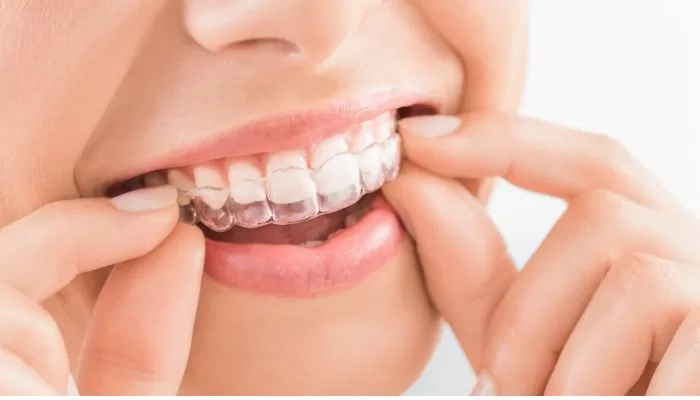Health
Do Clear Aligners Really Work?

Many people are used to braces being the only solution to misaligned teeth. Clear aligners are removable and invisible, offering far more convenience and comfort, so they might seem too good to be true. Fortunately, clear aligners work just as well as braces and sometimes better. In fact, aligner treatment may take less time than braces and cause less pain. This article will show you how clear aligners work and explain some of their benefits before diving into how you can get clear aligners.
What are clear aligners?
Clear aligners are invisible, removable devices that correct mild to moderate cases of crooked and misaligned teeth and jaws. They work by exerting pressure on the teeth, slowly shifting them from their current spots into the correct position. You’ll get several aligners, each one slightly further along in the process. With this type of teeth straightening treatment, you swap your aligners out every couple of weeks to progress through treatment.
Many prefer aligners to braces for a couple of reasons:
- Invisible — No one can see aligners when you wear them, allowing you to continue smiling with confidence as your teeth shift.
- Comfortable — Aligners often cause less tooth pain and mouth discomfort. They’re form-fitting, so they don’t rub other parts of your mouth.
- Removable — Aligners are easier to clean than braces because you can remove them for eating and cleaning. You can also clean your teeth better this way.
How clear aligners work
Getting clear aligners is similar to braces, although there are some key differences that make them even more convenient. Here’s how clear aligners work:
1. Scheduling a consultation
First, you’ll schedule a consultation with your provider. They’ll look over your teeth and determine your eligibility for clear aligner treatment. You can also ask questions and bring up any concerns you have about aligners at this stage of the process.
2. Getting the aligners
If you’re a good candidate for aligners, you’ll get x-rays of your mouth and give impressions or a digital scan to the dentist. The dentist then sends these off to aligner manufacturers so they can create the aligners. This part of the process can take a few weeks.
Once they’re done and sent to your provider, you’ll pick them up at your provider’s office. Before leaving, you’ll make sure they fit, and your dentist will instruct you on wearing them and caring for them.
3. Wearing the aligners
Next, you’ll receive a set of aligners, and each pair is slightly further along in the treatment process. Every couple of weeks, you swap out your current set for the next in the sequence. You must wear aligners at least 22 hours per day to be effective. Only remove them to eat meals, clean your teeth and the device, and participate in activities that could damage the aligners, like contact sports. If you run into any issues, you can always visit your provider and get their help. Aligner treatment can sometimes take six to 12 months depending on the patient, compared to braces, which may take longer than 12 months.
The bottom line
Clear aligners are removable and invisible, making them more comfortable and convenient than braces for many people. Using them is simple, too. After visiting your provider and getting the devices, you’ll wear them at least 22 hours a day and cycle through them every few weeks, per your provider’s instructions. They’ll put pressure on your teeth to shift them into the right spots as long as you keep up with your treatment. Soon enough, you’ll have a nice, straight smile you can show off with confidence.

















































